Co-writer of the book that inspired Bhansali to envision a film on Kamathipura’s godmother of the ’50s, mid-day’s Jane Borges meets Alia Bhatt for an evening chat on what it took to metamorphose into the sassy fighter
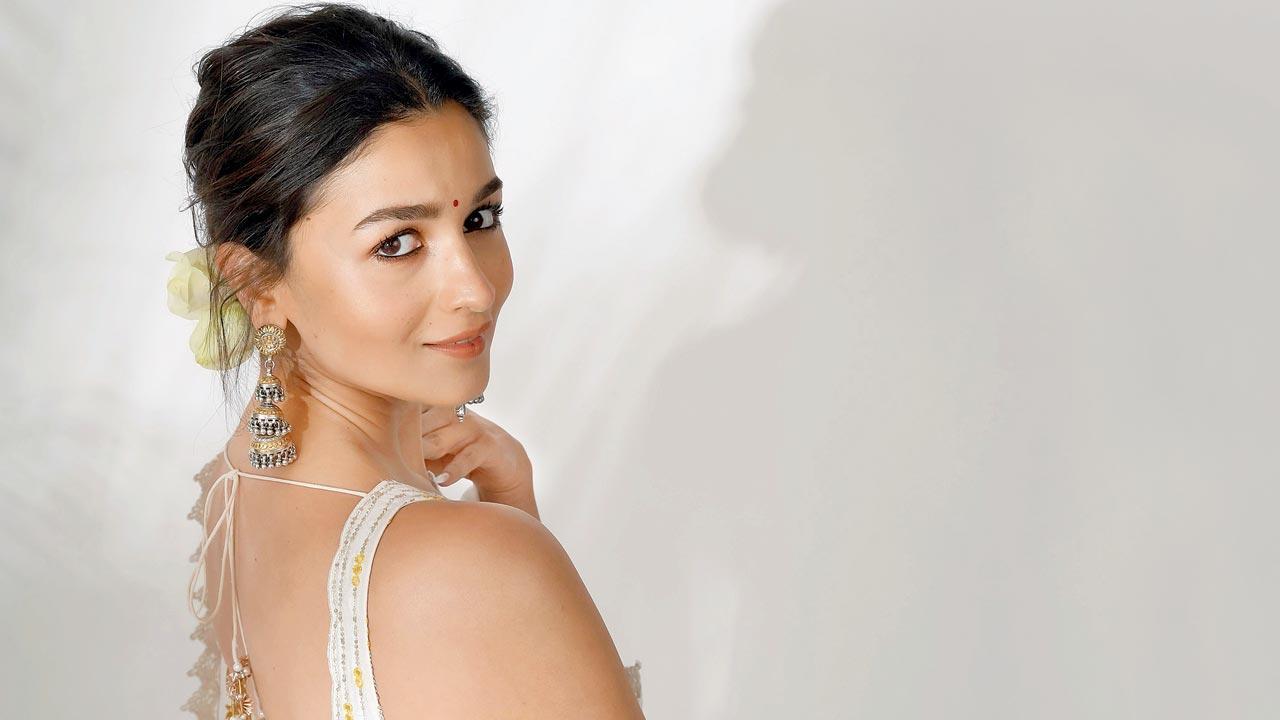
Alia Bhatt
Kamathipura is gritty at its worst, but otherwise plain, sombre and dull. There are days when it will surprise you; like the last time this writer visited the area, notoriously remembered as Asia’s largest red-light district. This was in June 2016 for an article I was pursuing for this very newspaper on the gentrification of the neighbourhood of Mumbai with the infamous pincode 400008. Real estate kingpins had been covetously eyeing the rundown tenements. The hope was that the dingy pinjras would slowly come to be replaced by plush high-rises, white-washing any stains of a murky past.
ADVERTISEMENT
That day, 11th lane was cradled in chaos. A group of sex workers huddled around me, disturbed and desperate, as they spoke about the “burqewale log” or masked goons who’d beat them up with rods and chappals, threatening them to leave. The alleged harassment and growing anti-prostitution sentiment among the new conservative residents may have left them shaken, but despite the lack of support, they tenaciously held on. Between 2002 and 2012, Kamathipura’s sex workers had dwindled from 30,000 to roughly 2,000. The shrinking numbers had left many silenced. In a ruinous, decrepit pinjra that led into a maze of rooms, partitioned by thin curtains, I met more women, who feared stepping out and making a scene of protest. They spoke of having no one to plead their case to, because there was nobody to listen.
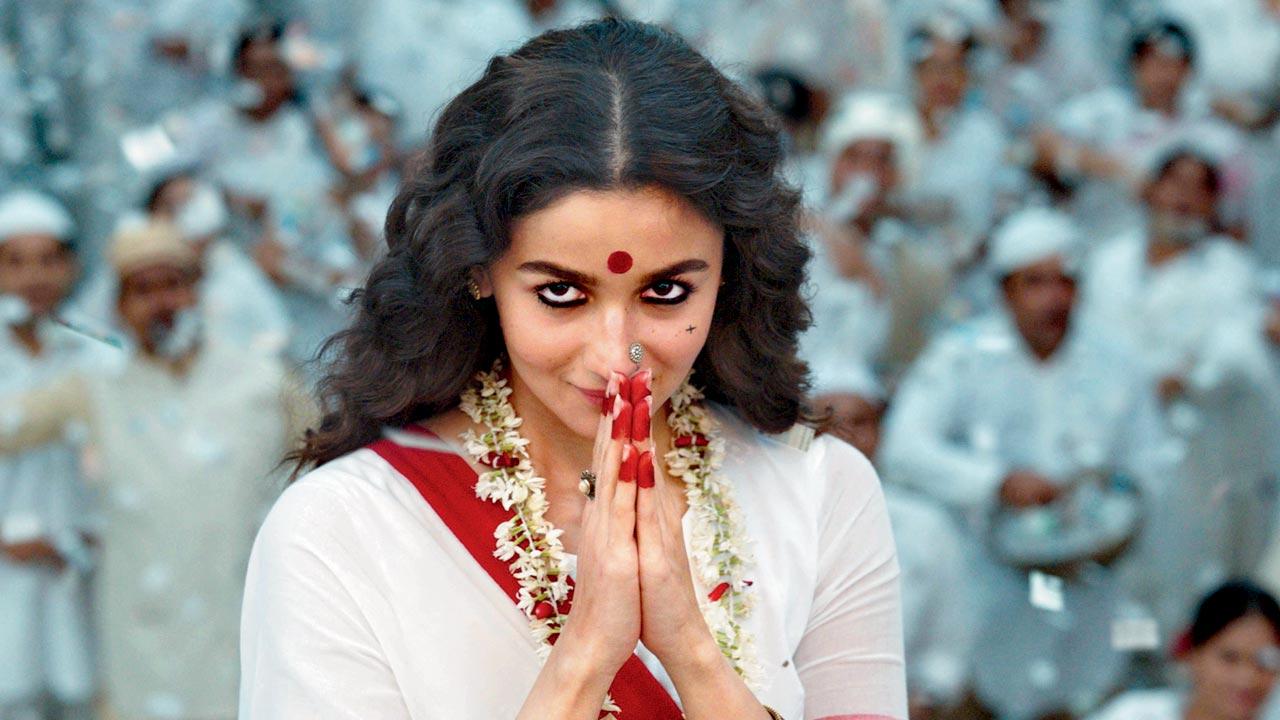 Bhatt, who’s being hailed for a luminous, real performance, says she was nervous as hell to play the role. As a journalist researching a 2011 crime fiction title, Borges stumbled on the legacy of Gangubai Kathewali or Kathiawadi in Kamathipura’s 12th lane, where residents regaled her with anecdotes of Gangu’s drive to fight for the marginalised
Bhatt, who’s being hailed for a luminous, real performance, says she was nervous as hell to play the role. As a journalist researching a 2011 crime fiction title, Borges stumbled on the legacy of Gangubai Kathewali or Kathiawadi in Kamathipura’s 12th lane, where residents regaled her with anecdotes of Gangu’s drive to fight for the marginalised
If this was the Bombay of the 1950s and ’60s, such a story, we recall thinking to ourselves, would have played out very differently. This was the era when Gangubai Kathewali or Kathiawadi as disparate accounts call her, the matriarch and self-appointed godmother to women living on the margins, reigned. I had heard of her during a chance conversation with a veteran journalist when we passed through her home in Kamathipura 12th lane; it later inspired my co-writer and I to pursue her story for a book we were then working on.
The “iron-willed” Gangubai’s life was not an ordinary rags-to-riches tale. Sources say she was tricked into prostitution as a young woman by her alleged lover. Gangubai who hailed from an affluent home in the Kathiawar region of Gujarat, never found the courage to return to her family. Instead, she chose the bold path, overturning misfortune to consolidate power—taking charge as brothel madam at a young age, and finding a friend in Pathan warlord Abdul Karim Lala—to become an equally revered and feared figure, who hobnobbed with journalists and politicians. She took the cudgels for her women, and minced no words, when taking down her detractors. Her wit was the stuff of lore. Local legend is that she met with Jawaharlal Nehru, seeking his intervention in a proposal to displace sex workers. How would Gangubai have responded to the anti-prostitution movement in Kamathipura of 2016? It’s not hard to imagine.
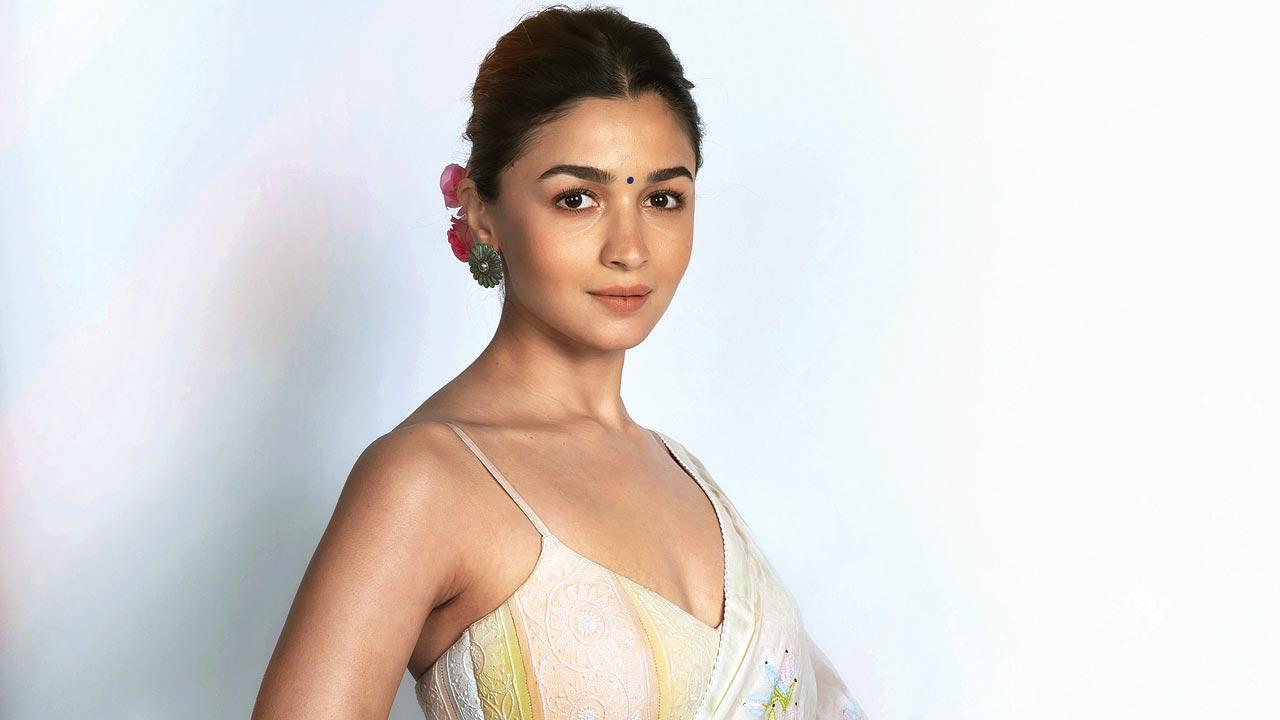 Alia Bhatt
Alia Bhatt
Yet, Gangubai’s (fondly known as Ganguma) role in safeguarding Kamathipura seems to have disappeared into oblivion after she passed on in the late 1970s. The renewed interest in her life has come with Sanjay Leela Bhansali’s Alia Bhatt-starrer Gangubai Kathiawadi that hit screens on Friday, and which was inspired from the book I co-authored with S Hussain Zaidi.
All writers have their quirks; some like me, are wary about book-to-screen adaptations. But, it’s hard to be indifferent about a character that’s so close to home, revived by an actor whose oeuvre is enviable. Interviewing Bhatt was more a project of curiosity.
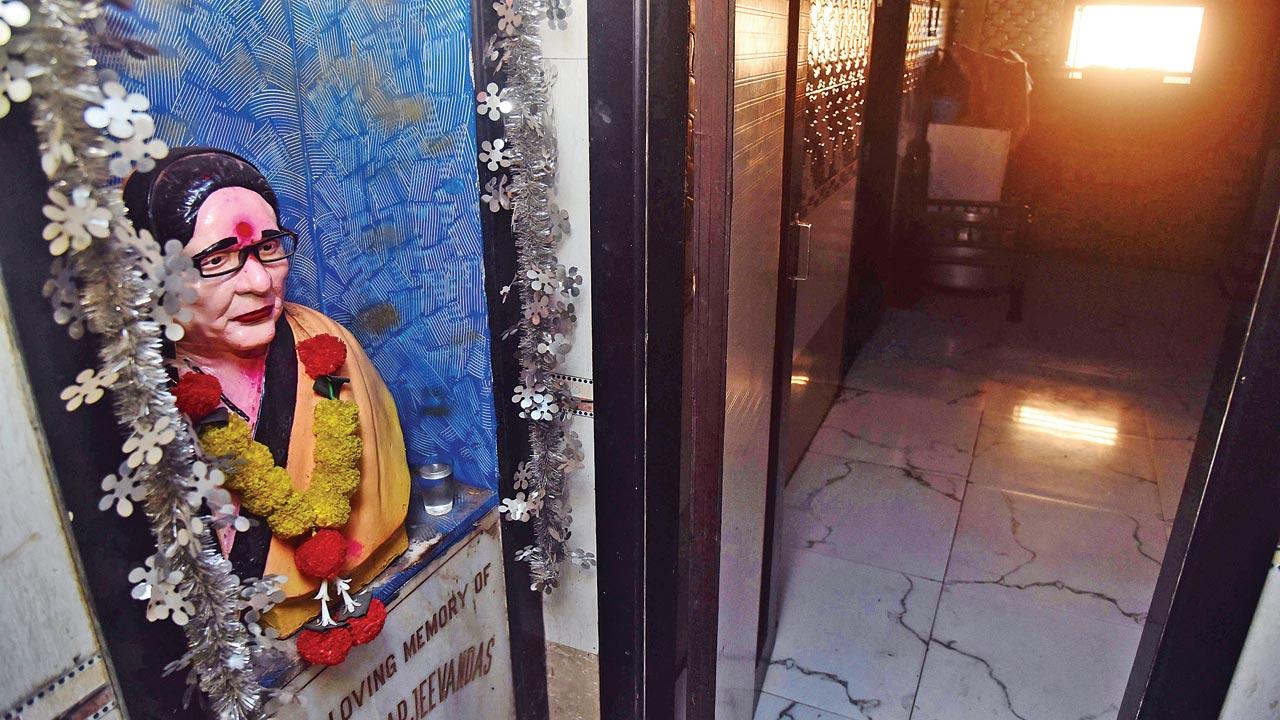 After Gangubai’s death, busts were installed in Kamathipura, like this one inside a tenement that was reportedly under her jurisdiction. It carries the name Gangubai Harjeevandas Kathiyawadi and her date of passing September 8, 1977. It appears to have been installed in 1981 by “Sasa Ratna Alias Aunty Family”, according to the inscription below the bust. Pic/Shadab Khan
After Gangubai’s death, busts were installed in Kamathipura, like this one inside a tenement that was reportedly under her jurisdiction. It carries the name Gangubai Harjeevandas Kathiyawadi and her date of passing September 8, 1977. It appears to have been installed in 1981 by “Sasa Ratna Alias Aunty Family”, according to the inscription below the bust. Pic/Shadab Khan
The day I am to meet Bhatt, we’ve spent the day thinking about the real Gangu, whose legend permeated the gullies of Kamathipura. Except for a framed photograph I had seen hang on a wall in one of the houses I had visited during my research, I have no visual memory of her. Now, pictures of Bhatt in the film’s stills, where she has christened herself Gangubai, inundate my thoughts. Talk about how Bollywood can take up mind space. The ‘reel’ Gangu walks into the Bandra studio where we’ve been waiting for a while, her hurried steps making her aware that she has caused a slight delay. Her posse of stylists and makeup artists follow closely behind. Bhatt complains about the plastic chairs we are going to be sitting on—it’s not a starry tantrum, she’s just concerned about how it will look on video. She drops a quick, “hi”, requesting me to sit.
Edited excerpts from the interview.
Let’s start from the beginning. When you were approached to play the character, what were your first thoughts?
Fear (laughs). I was a bit confused about how I’d be able to portray her. She was very fierce, brave, sassy, and unique. For someone from that era to create waves with her words, with her conversation, and the way she thought—she literally started a movement to fight for the [cause of] women of Kamathipura. She did it because she believed in it. These are all amazing traits to portray, and it’s an author-backed role, so there was a lot of fear. But with time, it all settled. I was so taken in by the fact that Sanjay sir [Bhansali], who is a visionary, was choosing a subject like this—because it’s totally unlike the films he has done—and believed that I could portray Gangubai Kathiawadi.
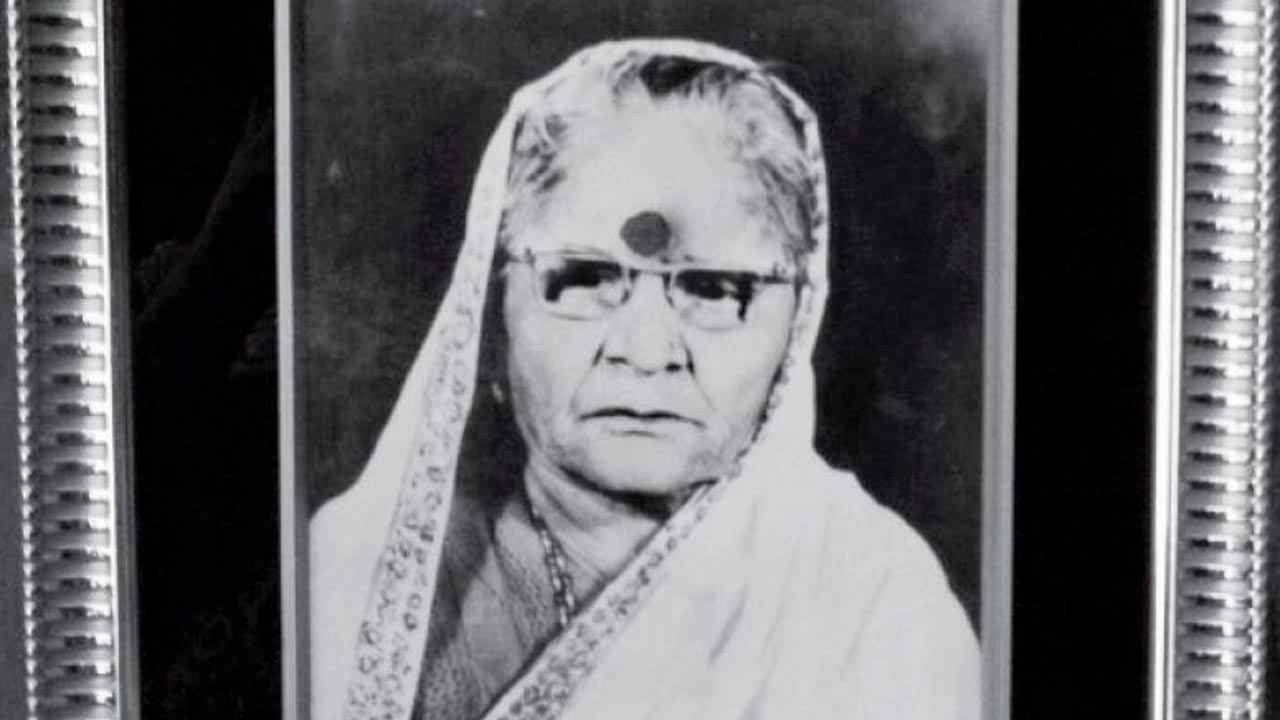
A photo frame of Gangubai hangs in one of the homes in Kamathipura. Pic courtesy/Westland Books
You’ve done female-driven films before. There’s Highway, Dear Zindagi and Raazi—I personally think they are all very powerful, feminist films. How is Gangubai different?
In Gangubai, the character is the film. It’s a biopic; it’s based on a true life story; the character’s journey is very episodic. It’s these episodes in her life that brings the story together. For me, it’s one of the first films [I’ve done] that’s so character-driven. You know, even when I’m promoting the film, people ask me to do the Gangbai pose or say the Gangubai dialogue. Characters like these are not written often, and definitely not written for women. If you fall in love with the character, you’ll fall in love with the film.
As a student in Bombay, I had heard about Kamathipura, but it’s only when working on the book and subsequently, as a journalist, did I really experience what this place meant in the larger scheme of things. Generally, movies tend to paint a more colourful picture of a neighbourhood like it, but in reality it feels like a dark hole. The place may have been as unfamiliar to you, as it was once to me. Did you research or visit the place that your character inhabited?
We were going to do a trail, where I’d just drive through Kamathipura and see [the neighbourhood]. But, for some reason it never happened. And then [Sanjay] sir only said, ‘Hold on! If she hasn’t gone yet, let her not go’. [Incidentally] we were starting with a sequence [in the film] where she is thrown into a place that she doesn’t know [anything about].
On the first day of the shoot, I remember being very nervous. We started with a scene where it’s her first night in Kamathipura; it was also a difficult sequence. All the girls [actors] were sitting in their positions and getting ready before they went out [on work]. I was genuinely uncomfortable [watching the scene play out]—it was also visible in my body language. In a way it helped that I wasn’t well-versed with the area. It worked for that sequence.
As far as the research goes, I watched a few videos and documentaries that sir sent my way. There’s a certain hardness and blankness in the eyes [of the women], which comes from hitting rock bottom. It’s just about surviving and getting through the day.
![This week’s release Gangubai Kathiawadi tells the story of an equally revered and feared matriarch who reigned over Kamathipura in the 1950s and ’60s. Bhatt says she found it difficult to separate herself from Gangubai, a character she has lived with for three years. “[People say that] I have begun talking like Gangu.”](https://images.mid-day.com/images/images/2022/feb/alia-twenty-seven-d_e.jpg)
This week’s release Gangubai Kathiawadi tells the story of an equally revered and feared matriarch who reigned over Kamathipura in the 1950s and ’60s. Bhatt says she found it difficult to separate herself from Gangubai, a character she has lived with for three years. “[People say that] I have begun talking like Gangu.”
But also vulnerable. How challenging was it for you to portray this dichotomy?
Often, while saying a dialogue, there’s actually a totally different dialogue playing out in the brain. So, this dichotomy [in Gangubai’s character] was very enjoyable to me—where, for instance, when she says, ‘Maa ka naam kaafi nahin hain,’ she is possibly abusing this person in her head. I love the fact that she is vulnerable, but also needs to display strength. I love that she is childish, but also mature.
Journalists have to think objectively about their characters; I think for an actor it may work differently. Were you emotionally invested in Gangubai’s story?
I don’t think I was able to separate myself from the character. I am able to separate myself from the day of work; after the shot is done, I can go back to not continuing to act, because I am not really a method actor in that sense. But, I think a part of the character is now in me, and I sort of feel comfortable that way. Every now and then people say, ‘now she is not talking like Alia, she talks like Gangu’. I think in my own Alia way, I have become Gangu. I lived vicariously through her; it’s a great feeling of abandon to be as free, open and clear as Gangu.
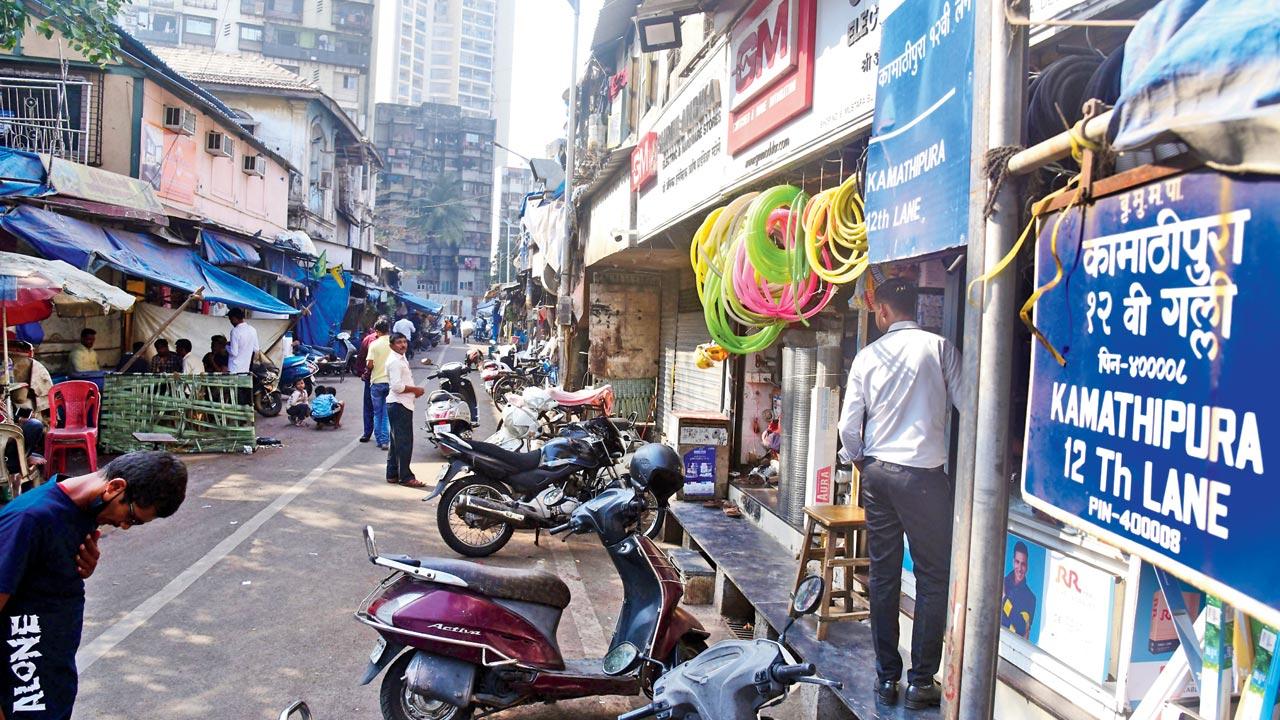
Kamathipura 12th Lane, where Gangubai lived during the last few years of her life. Pic/Shadab Khan
It’s been three years.
Yes, that’s right.
So, you’ve been living and breathing the character for this long.
A very long time, yes. Also, when I was shooting for this film, I was not shooting for anything else. I was living the character; even at home, I used to talk about it. I remember the first time I narrated the script to Ranbir [Kapoor], it was only in the middle of the pandemic. I was sitting and doing so much work on it, by myself. The stakes became much higher [with the pandemic], because you had to make sure that it’s a good product for people to come back to the theatres and watch.
Tell us which shade of Gangubai was most challenging for you to portray?
Venom. I remember this shot very clearly, where sir told me, ‘I want to see the venom in your eyes’. I don’t think I have venom in me to give. That comes from a hard place from being totally broken down. Sir told me to think of someone I didn’t like. And while I did that, nobody brought venom to my mind. That was a very difficult shot. Eventually, I don’t know how I did. I should ask him.
How was it working with Sanjay Leela Bhansali?
Amazing. With him, you feel alive, you know you are creating.
He is known to get the best out of actors.
Best out of everyone. Because he is not settling for mediocre involvement. He wants the highest output because that’s what he gives. When the day is not going well, sir will go to his van and change his clothes. He’ll come out in a new outfit, and say that he was feeling stuck and wanted to change. He allows for the creative juices to flow in such an unpredictable manner that he expects the same out of you as well.
While watching the trailer, and of course, the songs, I saw a very different Alia from what we’ve seen over the last decade. There’s something about the body language—the nuances of it. How tricky was it to imbibe this, considering apart from written material and photos of Gangu, you didn’t have anything else to fall back?
In fact, I find that most interesting. You have the final dish, but you don’t have the ingredients and now you need to figure how to put it all together. That is so much more enjoyable. Maybe someday, I will do a part, where I have to emulate the person exactly. And that will be a completely different kind of challenge.
Also, there were a few things we knew about her; if she came to Bombay to become an actor, she might have been a bit theatrical; if she gave this big speech, she might have been a great thinker. You kind of build that into the character.
There’s been some criticism about your portrayal from certain sections of the film industry.
I am not averse to criticism; I don’t think anyone needs to bow down to me. I am not even claiming to be a great actor. So, criticism doesn’t bother me in general; and people jumping the gun before watching my film also doesn’t affect me. I am the sort to believe in goodness and [spreading] positivity. So, negative and baseless things don’t reach my ears.
Alia, the actor, turns 10 this year. How would you define the decade?
Beautifully chaotic—lots of ups and downs. Every day has resulted in making me the person I am. So the description is not good, great, or successful; none of that. It’s a bit of a beautiful mess, and I love it.
 Subscribe today by clicking the link and stay updated with the latest news!" Click here!
Subscribe today by clicking the link and stay updated with the latest news!" Click here!












